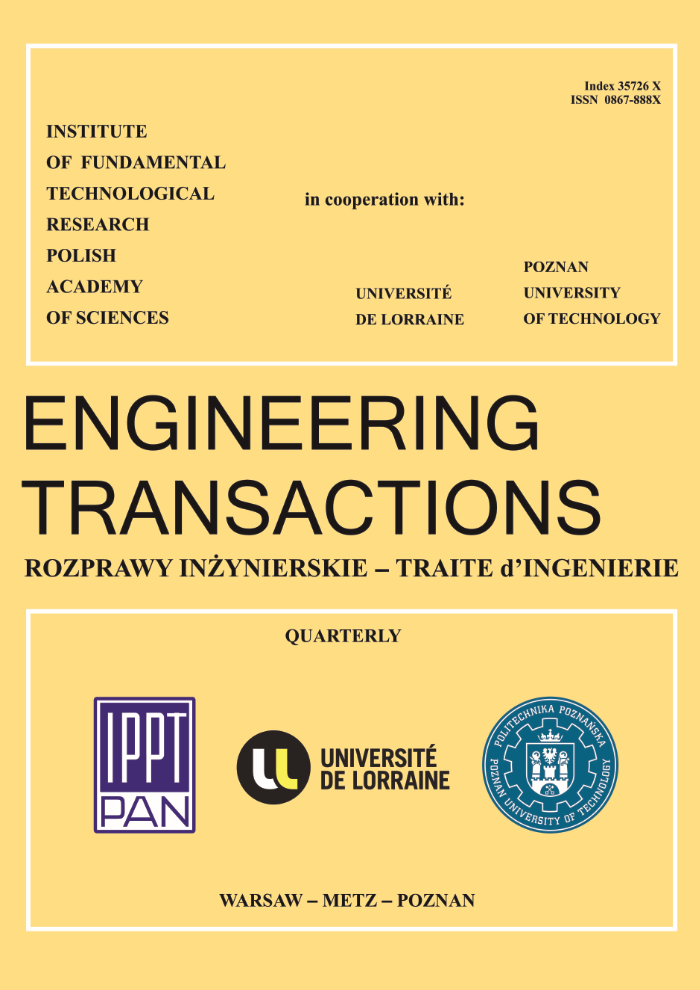Abstract
This paper presents the results of tests carried out on mortars prepared with fly ash – slag cements. Two types of fly ash were used – siliceous (V) and calcareous (W). The influence of fly ash type on properties of mortars was evaluated on the base of results of following tests: compressive strength, consistency and its stability in time and chloride ions permeability and carbonation depth. It was claimed that mortars made with cements containing calcareous fly ash (W) are characterized by higher compressive strength (at each age). Moreover, negative impact of calcareous fly ash (W) on rheological properties of mortars was observed. Durability tests revealed favourable effect of calcareous fly ash on resistance of mortars to corrosive agents attack – lower chloride ions permeability and carbonation depth in comparison to siliceous fly ash – slag cement mortars.Keywords:
cement, fly ash, ground granulated blast furnace slag, multicomponent cement.References
[1] Antiohos S., Maganari K., Tsimas S., Evaluation of blends of high and low calcium fly ashes for use as supplementary cementing materials. Cement and Concrete Research 27 (2005) pp. 349-356
[2] Dongxu Li, Jinlin Shen, Yimin Chen, Lin Cheng, Xuequan Wu, Study of properties on fly ash –slag complex cement. Cement and Concrete Research 30 (2000) pp. 1381-1387
[3] Giergiczny Z. The role of calcareous and siliceous fly ashes in the shaping of properties of modern construction binders and cement materials. (in Polish: Rola popiołów lotnych wapniowych i krzemionkowych w kształtowaniu właściwości współczesnych spoiw budowlanych i tworzyw cementowych), Politechnika Krakowska, Kraków 2006
[4] Giergiczny Z. Fly ash as a component of cement and concrete (in Polish: Popiół lotny w składzie cementu i betonu), Politechnika Śląska, Gliwice 2013
[5] Giergiczny Z., Garbacik A., The synergic effect of mineral additives in the composition of composite cement. (in Polish: Efekt synergii dodatków mineralnych w składzie cementów wieloskładnikowych), XII Scientific and Technical Symposium Rheology in Concrete Technology, Gliwice 2010
[6] Hauer B., Mueller Ch., Severins K. New findings concerning the performance of cements containing limestone, granulated blasfurnace slag and fly ash as main constituents. Cement International Part 1 - 3/2010 pp. 80-86; Part 2 - 4/2010 pp. 83-93
[7] Xuequan Wu, Hong Zhu, Xinkai Hou, Husen Li, Study on steel slag and fly ash composite Portland cement. Cement and Concrete Research 29 (1999) pp. 1103-1106
[8] Zhu Yu, Yang Yingzi, Yao Yan, Use of slag to improve mechanical properties of engineered cemenitious composites (EECs) with high volumes of fly ash. Construction and Building Materials 36 (2012) pp. 1076-1081
[9] EN 197-1:2011 Cement - Part 1: Composition, specifications and conformity criteria for common cements
[10] EN 196-1:2005 Methods of testing cement - Part 1: Determination of strength.
[11] EN 196-3:2008 Methods of testing cement - Part 3: Determination of setting times and soundness
[12] EN 1015-3:1999 Methods of test for mortar for masonry - Part 3: Determination of consistence of fresh mortar (by flow table)
[13] C 1202-05 Standard Test Method for Electrical Indication of Concrete's Ability to Resist Chloride Ion Penetration
[14] prEN 12390-12:2010 Testing hardned concrete. Part 12: Determination of the potential carbontaion resistance for concrete. Accelerated carbonation method.
[2] Dongxu Li, Jinlin Shen, Yimin Chen, Lin Cheng, Xuequan Wu, Study of properties on fly ash –slag complex cement. Cement and Concrete Research 30 (2000) pp. 1381-1387
[3] Giergiczny Z. The role of calcareous and siliceous fly ashes in the shaping of properties of modern construction binders and cement materials. (in Polish: Rola popiołów lotnych wapniowych i krzemionkowych w kształtowaniu właściwości współczesnych spoiw budowlanych i tworzyw cementowych), Politechnika Krakowska, Kraków 2006
[4] Giergiczny Z. Fly ash as a component of cement and concrete (in Polish: Popiół lotny w składzie cementu i betonu), Politechnika Śląska, Gliwice 2013
[5] Giergiczny Z., Garbacik A., The synergic effect of mineral additives in the composition of composite cement. (in Polish: Efekt synergii dodatków mineralnych w składzie cementów wieloskładnikowych), XII Scientific and Technical Symposium Rheology in Concrete Technology, Gliwice 2010
[6] Hauer B., Mueller Ch., Severins K. New findings concerning the performance of cements containing limestone, granulated blasfurnace slag and fly ash as main constituents. Cement International Part 1 - 3/2010 pp. 80-86; Part 2 - 4/2010 pp. 83-93
[7] Xuequan Wu, Hong Zhu, Xinkai Hou, Husen Li, Study on steel slag and fly ash composite Portland cement. Cement and Concrete Research 29 (1999) pp. 1103-1106
[8] Zhu Yu, Yang Yingzi, Yao Yan, Use of slag to improve mechanical properties of engineered cemenitious composites (EECs) with high volumes of fly ash. Construction and Building Materials 36 (2012) pp. 1076-1081
[9] EN 197-1:2011 Cement - Part 1: Composition, specifications and conformity criteria for common cements
[10] EN 196-1:2005 Methods of testing cement - Part 1: Determination of strength.
[11] EN 196-3:2008 Methods of testing cement - Part 3: Determination of setting times and soundness
[12] EN 1015-3:1999 Methods of test for mortar for masonry - Part 3: Determination of consistence of fresh mortar (by flow table)
[13] C 1202-05 Standard Test Method for Electrical Indication of Concrete's Ability to Resist Chloride Ion Penetration
[14] prEN 12390-12:2010 Testing hardned concrete. Part 12: Determination of the potential carbontaion resistance for concrete. Accelerated carbonation method.


